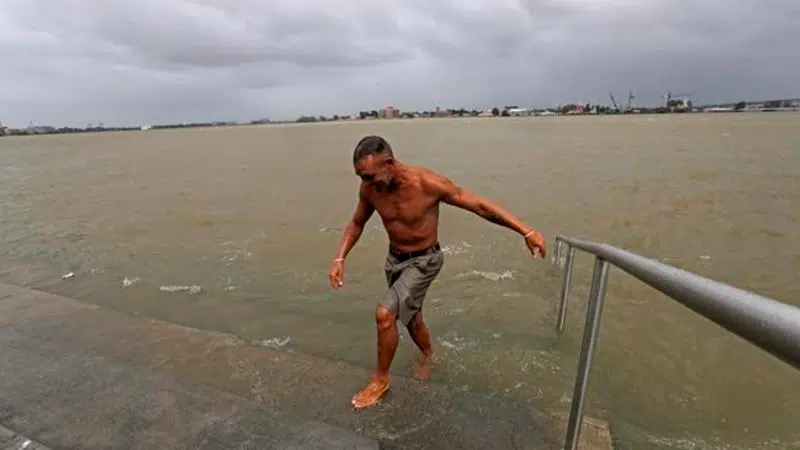
Millions in line of punishing rain from Tropical Storm Barry
NEW ORLEANS — People boarded up buildings, stocked up on water and braced for torrents of rain and punishing wind from a strengthening Tropical Storm Barry that threatened millions as it churned a path ashore and tested efforts to guard against flooding since Hurricane Katrina devastated New Orleans 14 years ago.
Officials predicted Barry would make landfall Saturday morning near Morgan City as the first hurricane of the season, with the edges of the storm already lashing Louisiana with rain and leaving some coastal roads underwater. As dawn approached Saturday, more than 45,000 people in southern Louisiana had lost power.
Though expected to be a weak hurricane, just barely over the 74 mph (119 kph) wind speed threshold, it threatened disastrous flooding across a swath of the Gulf Coast. The storm was expected to inflict the most damage on Louisiana and parts of Mississippi, with wind and rain affecting more than 3 million people.
Late Friday night, residents received good news from forecasters: the Mississippi River is expected to crest in New Orleans at about 17.1 feet (5.2 metres) on Monday, not 19 feet (5.8 metres) as had been earlier predicted. The levees protecting the city range from about 20 to 25 feet (6 to 7.5 metres) in height.


